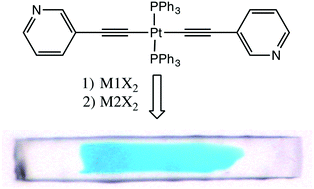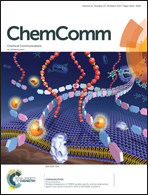Molecular tectonics: hierarchical organization of heterobimetallic coordination networks into heterotrimetallic core–shell crystals†
Abstract
Combinations of a neutral Pt(II) organometallic tecton bearing two triphenylphosphine and two 3-ethynylpyridyl coordinating moieties in trans positions with MX2 complexes (M = Co(II) and X = Cl− or Br− and M = Zn(II) and X = Cl−) lead to the formation of isostructural 1D heterobimetallic coordination compounds. By 3D epitaxial growth processes, using coordination bonding, heterotrimetallic core–shell crystals are generated by the growth of crystalline layers on seed crystals.



 Please wait while we load your content...
Please wait while we load your content...